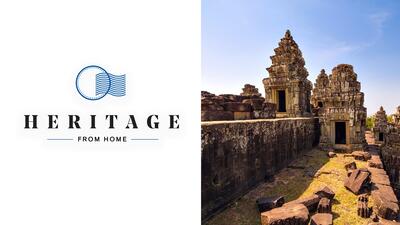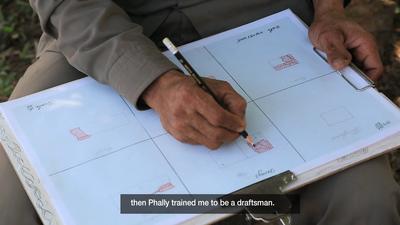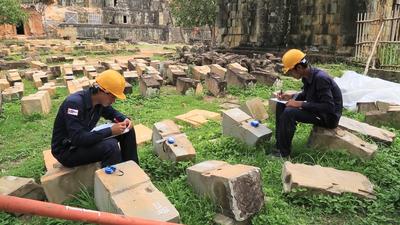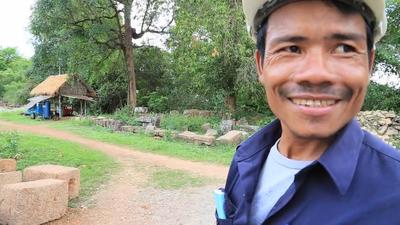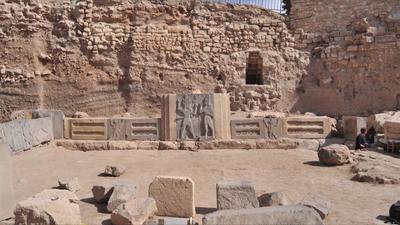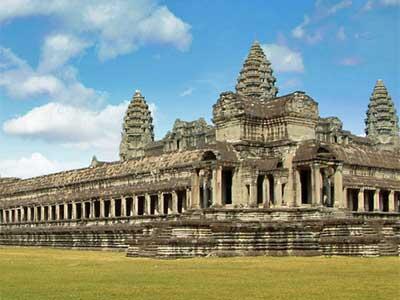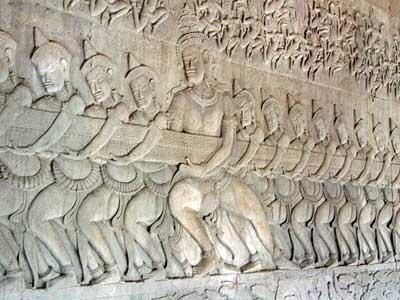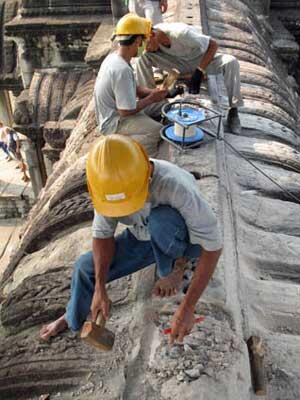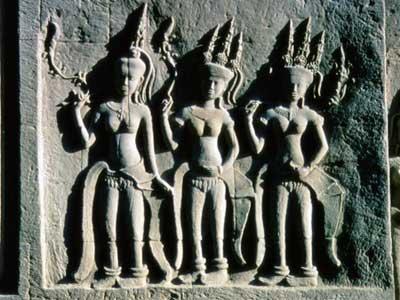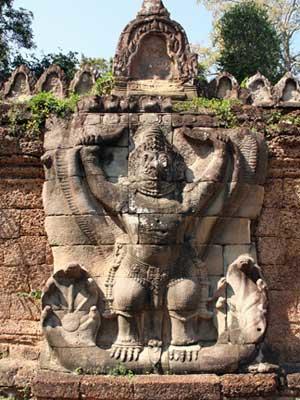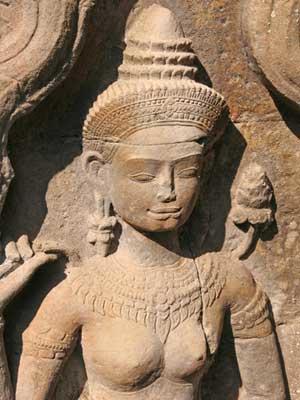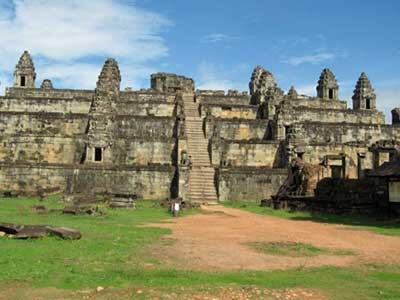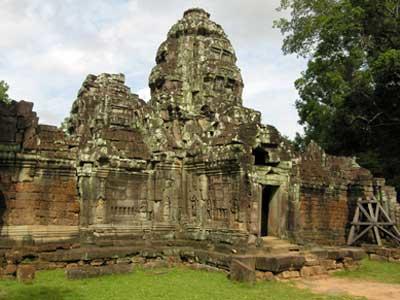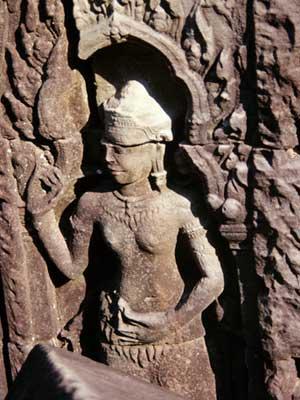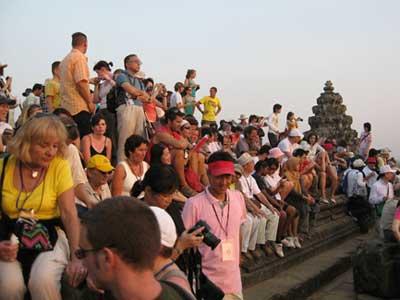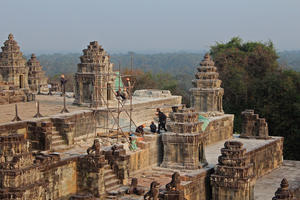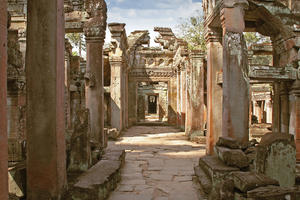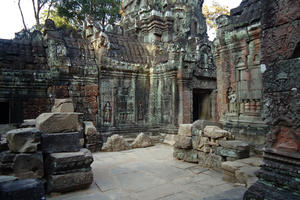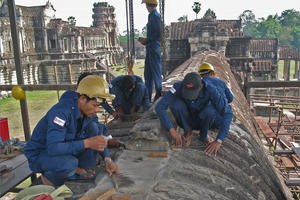Angkor Archaeological Park
Site History and Significance
Once the seat of the Khmer Empire, which ruled a large portion of mainland Southeast Asia between the ninth and fifteenth centuries AD, Angkor reached its peak in the twelfth century before entering a long period of decline. In the sixteenth century, only Angkor Wat was still in use; the dozens of Hindu and Buddhist temple complexes and hundreds of smaller structures had been swallowed by the jungle. Documented and partially restored in the 1850s by European explorers, Angkor’s temples garnered international attention and became a source of inspiration for many over the course of the next century. After the fall of the Khmer Rouge regime and the end of the Civil War in the 1980s, Angkor became a focal point of the rebuilding efforts in Cambodia.
Our Involvement
An Initial Field Mission
WMF became the first Western organization to survey the temples at Angkor since the country's devastating civil war from 1975 to 1979 and its aftermath. An initial field mission in 1989 revealed the extent of damage the archaeological park had suffered after 20 years of civil strife and international isolation. The human toll of the genocide required more than just a physical intervention. When the Khmer Rouge was removed from power, no more than 100 college-educated Cambodians remained in Phnom Penh as survivors of the regime.
Three Decades of Preservation and Training
Encouraged by Cambodia's Ministry of Culture, WMF developed a set of recommendations after its initial field mission to address fundamental preservation issues at Angkor, and has since undertaken a wide variety of conservation and capacity-building initiatives at the site. In recognition of the growing threat of looting at the site, Angkor Archaeological Park was placed on the World Monuments Watch in 1996.
To restore a historical and cultural tradition to Cambodia, WMF established the Center for Khmer Studies, a permanent international research and training facility that would facilitate the exchange of knowledge between foreign scholars and their Cambodian counterparts. WMF also built a comprehensive conservation, training, and education program focusing on four key areas: the Churning of the Ocean of Milk Gallery within Angkor Wat, the gallery hosting the most prominent bas-relief; Phnom Bakheng, one of Angkor’s oldest temples; Preah Khan, an outstanding example of a large linear temple complex in a jungle setting; and Ta Som, a relatively smaller complex that is rich in architectural and sculptural detail.
Today, WMF employs more than 70 Cambodians in our restoration work, many of whom have been with the project for more than 20 years. Angkor Archaeological Park has come to represent the Cambodia’s rebirth after a dark period and is an important contributor to the local economy.
New Support for Continued Conservation
In February 2019, the Robert W. Wilson Charitable Trust announced $2 million in funding to support preservation efforts at five WMF projects, including Angkor Archaeological Park. Funds will advance the restoration of Phnom Bakheng and the creation of a new decorative ceiling for the Churning of the Ocean of Milk Gallery at Angkor Wat.
Support Angkor Archaeological Park
In January 2024, World Monuments Fund celebrated 35 years of commitment to Angkor Archaeological Park. Our work there continues today thanks to the help of individuals like you. Use this link to direct your gift to WMF’s next stage of work at this irreplaceable site of shared heritage.
 |
 |
Learn More
World Monuments Fund safeguards cultural heritage around the globe, ensuring our treasured places are preserved for present and future generations.
Sign up for our newsletter to receive regular updates on our projects, stories from the field, upcoming events, and more!
World Monuments Fund's work at Angkor Archaeological Park has been made possible, in part, by support from the U.S. Department of State; the U.S. Ambassadors Fund for Cultural Preservation (AFCP) and U.S. Embassy Phnom Penh; The Robert W. Wilson Charitable Trust; The Ralph E. Ogden Foundation; The Henry Luce Foundation, Inc.; The Estate of Margo Leavin; The Brown Foundation, Inc. of Houston; American Express; The DM Foundation; The Starr Foundation; International Music and Art Foundation; Mrs. Betty Wold Johnson and Mr. Douglas Bushnell; Wendy and Robert Brandow; Eleanor Briggs; Christopher and Priscilla Brewer; Samuel C . Miller and Rosetta A. Miller; The Pierre and Tana Matisse Foundation; Denise Gwyn Ferguson; Carnegie Corporation of New York; Isambard Kingdom Brunel Society of North America/Mr. and Mrs. Peter Norton; Donald I. Perry; Peter W. Davidson and Drew McGhee; Selma Ertegün; Tianaderrah Foundation / Nellie and Robert Gipson; Virginia James; The Andy Warhol Foundation for Visual Arts; The Estate of John Dennis; Pamela and David B. Ford; Gillian Fuller; Nora McNeely Hurley and Manitou Fund; Samuel H. Kress Foundation; and Peter Spry-Leverton.
Videos
